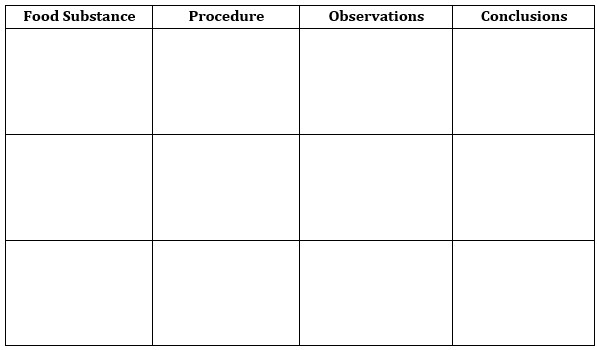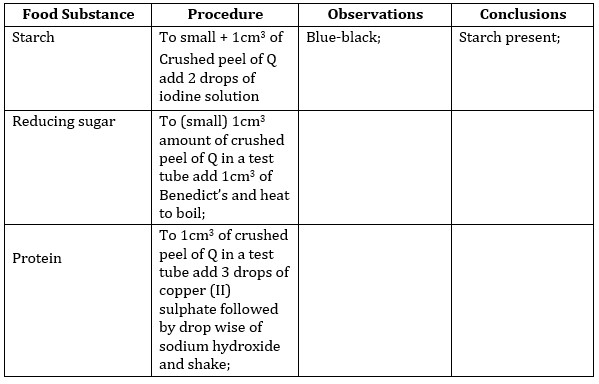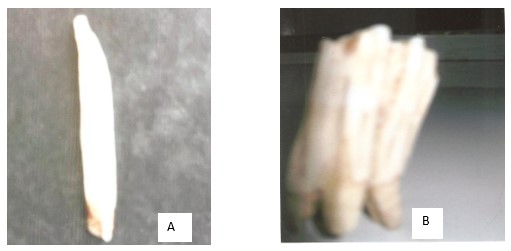Question 1
You are provided with a specimen labelled Q and hydrogen peroxide
-
- What part of plant is specimen Q?
- Give a reason for your answer
- Cut two equal cubes whose sides are about 1cm from specimen Q. Place one of the cubes into a boiling tube labelled A. Crush the other cube using a mortar and pestle. Place the crushed material in another boiling tube labelled B. To each boiling tube add 4ml hydrogen peroxide.
- Record your observations.
- Account for your results in (c) (i) above.
- Peel half of specimen Q and crush in a mortar. Use the reagents provided to test for the various food substances in the extract obtained from the crushed material.
Record the procedures, observations and conclusions in the table below.

Answer
-
- Stem tuber
- Presence of scale leaf and bud
- A - Slow evolution of bubbles;
B - fast evolution of bubbles; - Potato cube in A has a small surface area for action of enzyme catalase; Crushed potato cube in B has a large surface area for the action of enzyme catalase.
-

Question 2.
The photograph below shows a tooth from a carnivore and tooth from a herbivore.

- Which tooth is from a carnivore and which tooth is from a herbivore?
- From a carnivore
Reason - From a herbivore
Reason
- From a carnivore
- Identify the type of teeth shown by the photograph B.
Type
Reason - State the functions of the tooth B shown. Give reasons for your answer.
- Functions
Reason
- Functions
- Distinguish between homodont and heterodont teeth.
- Explain any two general adaptations of tooth to its functions.
Answer
-
- From a carnivore - A
Reason - Sharp and pointed for tearing flesh from bones. - From a herbivore - B
Reason - Has cusp for chewing and grinding.
- From a carnivore - A
- Type - Pre-Molar or Molar
Reason - Has three roots -
- Functions - Chewing and grinding; of vegetation and grass.
Reason - Sharp cusps; and wide surface for chewing and grinding.
- Functions - Chewing and grinding; of vegetation and grass.
- Homodont type are similar in shape and size while heterodont are different in size and shape.
- 1. Long to pierce through flesh
2. sharp to tear flesh from bones
